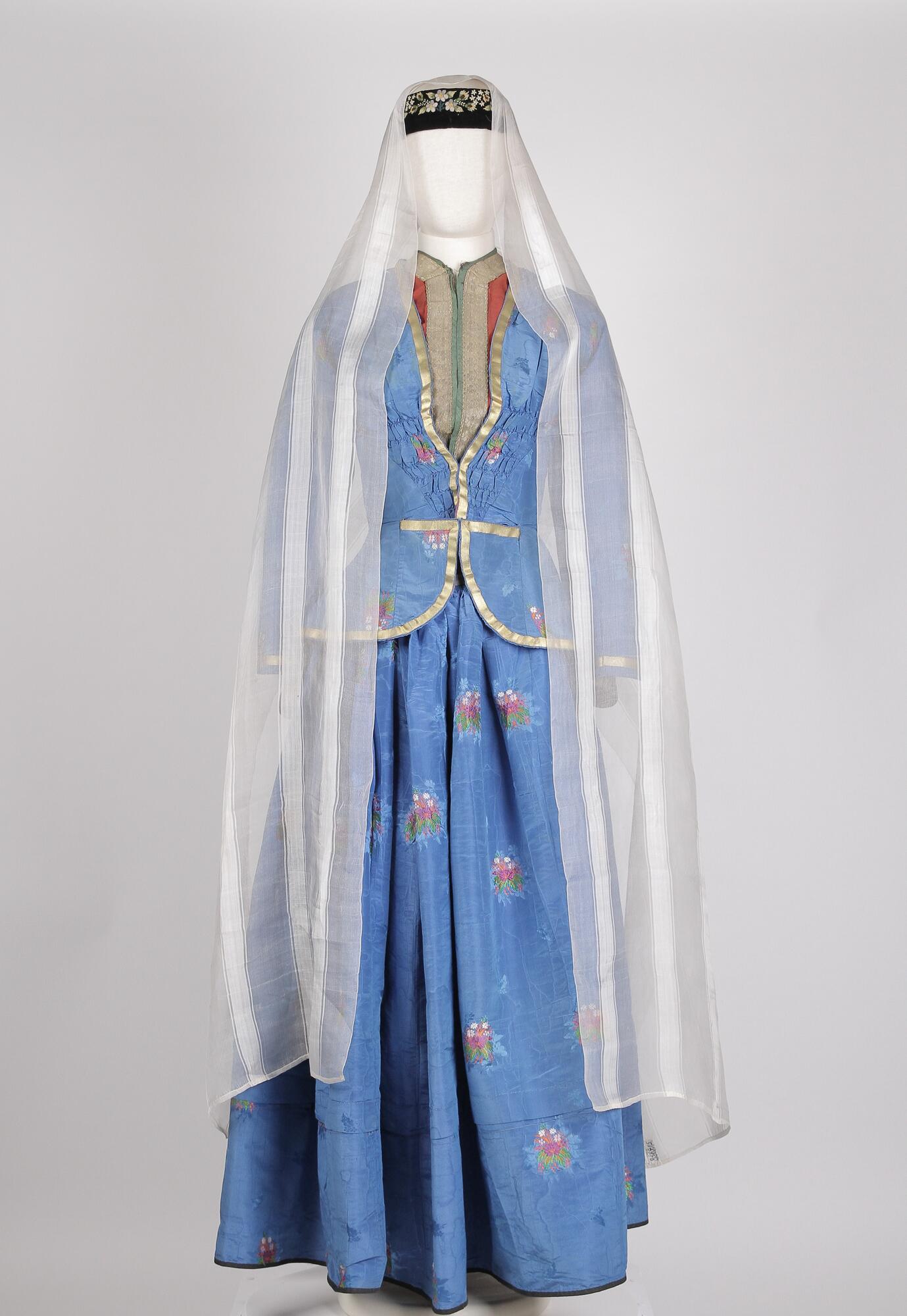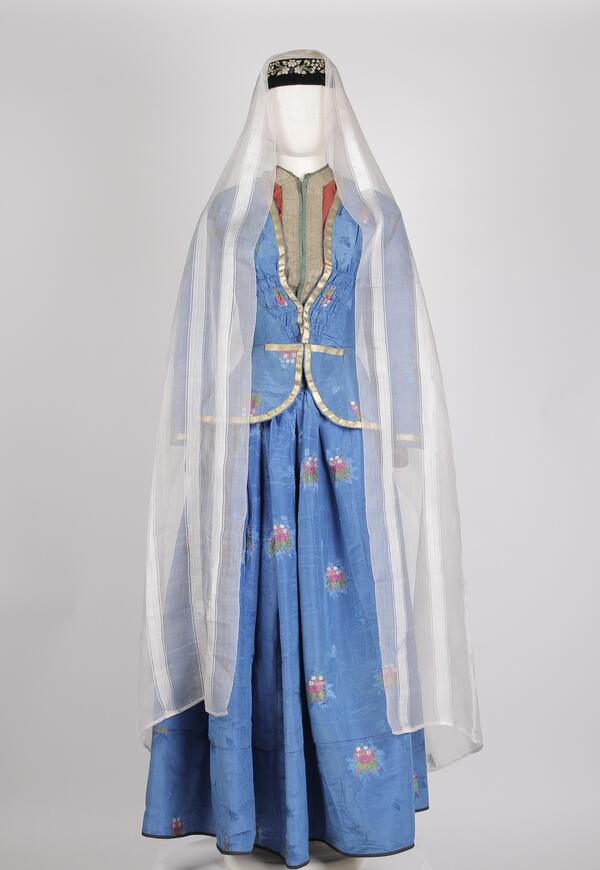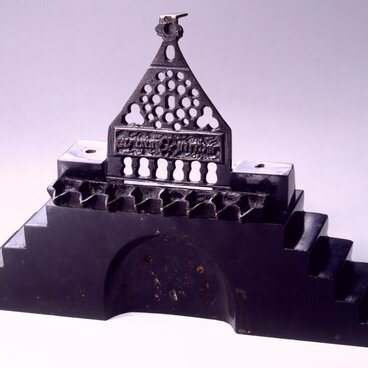Antikmari kaba is a type of clothing for Georgian Jewish women that consists of two parts: a jacket and a skirt. They are sewed of the same fabric or are similar in quality and color, so they look like one set. Antikmari kaba was made of silk or half-silk, monochrome or with multicolored vegetal patterns. It was produced in Europe, and the local population called it “antikmar fuar”. Hence the name of this type of clothing, different from the traditional kaba, the one-piece outwear of Georgian Jewish women.
The jacket of the antikmari kaba had a slit in the front and a triangular neckline. It had to fit the figure and flared with a basque at the waist. The ends of the jacket were rounded and fastened with a hook in the front. The sleeves flared downwards and were lined with bright silk fabric, visible in the sleeve opening, while the bodice was lined with cotton fabric. The skirt was made very wide, pulled together at the waist in small tucks, which were attached by a sewn-in belt or a narrow cloth edging.
Another style was similar to short men’s ahalukhi and was supposed to be combined with a skirt of a different fabric. Such jackets were tailored with a triangular neckline and a fastener at the waist, as well as with a closed collar, stand-up collar fastened with hooks or buttons all along the jacket’s length. The sleeves were wide or narrow with a slit opening from the elbow and fastened with buttons, thanks to which they tightly fitted the arms at the wrists. The fabrics for such jackets were bright, with multicolored patterns. They were often Turkish-made satins, ornamented in the ikat technique with vague outlines of the pattern. Jackets were further decorated with lace, patterned braid, galloons, and sequins.
Influenced by European fashion, a skirt with a jacket became widespread in urban Georgian and Jewish attires at the beginning of the 20th century. The traditional jackets of Georgian Jewish women changed. They had a variety of collars, puffs and pleats on the chest, ruffles and yokes. Most Georgian Jewish women were conspicuous in the city streets because of their colorful clothing, which always distinguished them from Georgian women whose clothes had a more restricted color scheme.
The jacket of the antikmari kaba had a slit in the front and a triangular neckline. It had to fit the figure and flared with a basque at the waist. The ends of the jacket were rounded and fastened with a hook in the front. The sleeves flared downwards and were lined with bright silk fabric, visible in the sleeve opening, while the bodice was lined with cotton fabric. The skirt was made very wide, pulled together at the waist in small tucks, which were attached by a sewn-in belt or a narrow cloth edging.
Another style was similar to short men’s ahalukhi and was supposed to be combined with a skirt of a different fabric. Such jackets were tailored with a triangular neckline and a fastener at the waist, as well as with a closed collar, stand-up collar fastened with hooks or buttons all along the jacket’s length. The sleeves were wide or narrow with a slit opening from the elbow and fastened with buttons, thanks to which they tightly fitted the arms at the wrists. The fabrics for such jackets were bright, with multicolored patterns. They were often Turkish-made satins, ornamented in the ikat technique with vague outlines of the pattern. Jackets were further decorated with lace, patterned braid, galloons, and sequins.
Influenced by European fashion, a skirt with a jacket became widespread in urban Georgian and Jewish attires at the beginning of the 20th century. The traditional jackets of Georgian Jewish women changed. They had a variety of collars, puffs and pleats on the chest, ruffles and yokes. Most Georgian Jewish women were conspicuous in the city streets because of their colorful clothing, which always distinguished them from Georgian women whose clothes had a more restricted color scheme.



